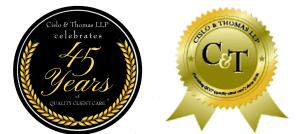Supreme Court Cases:
Hana Financial, Inc. v. Hana Bank, 574 U.S. ___ (2015)
In a unanimous decision, the Supreme Court held in Hana Financial v. Hana Bank that the issue of whether two trademarks are “legal equivalents” as to “create a single, continuing commercial impression” and may be tacked together for determining priority of the marks as a whole is a question of fact and should be decided by a jury.
The Supreme Court held that when a test relies on what an ordinary consumer understands to be the impression that a mark conveys, the test “falls comfortably within the [purview] of the jury.” The Supreme Court clarified that judges may still make a tacking determination on a motion for summary judgment if the parties have chosen to try their case before a judge; otherwise, the tacking issue is property reserved for the jury.
In an ideal world a company will want to continue using the same trademark over time, but if the mark is modified there is now a greater chance that the earlier use of the mark will be respected.
B&B Hardware, Inc. v. Hargis Industries, Inc., 575 U.S. ____ (2015)
On March 24, 2015, the Supreme Court held that if the Trademark Trial and Appeal Board (“TTAB”) decides on a likelihood-of-confusion issue for purposes of registration, then it has issue preclusion effects in district courts regarding infringement if a mark owner uses its mark in ways that are materially the same as the usages included in the mark’s registration application.
The Supreme Court held that the “likelihood of confusion for purposes of registration is the same standard as likelihood of confusion for purposes of infringement.” The Court conceded that the TTAB and the district courts are concerned with different purposes; the TTAB is concerned with whether marks “resemble” each other, while the courts are concerned with “use in commerce” for infringement purposes.
TTAB Litigants must now be very careful in their handling of TTAB matters as the ultimate findings may have dramatic effects later in Federal Court. We expect that TTAB cases will be more hard fought or avoided altogether in favor of Federal Court.
2014 International Trademark Statistics from Trademark Offices Throughout the World:
The top five trademark offices that received trademark applications in 2014 were China, United States of America, OHIM (EU Office), France, and Japan. The top five industry sectors that received trademark applications were agriculture, research & technology, clothing, business, and health. Last year, the total number of trademark classes specified in applications reached 7.45 million, a 6% increase from 2013, and the total number of trademark classes specified in registrations reached 2.15, an 11.1% increase from 2013. Further, there were 33.1 million active trademark registrations enforce worldwide in 2014.



